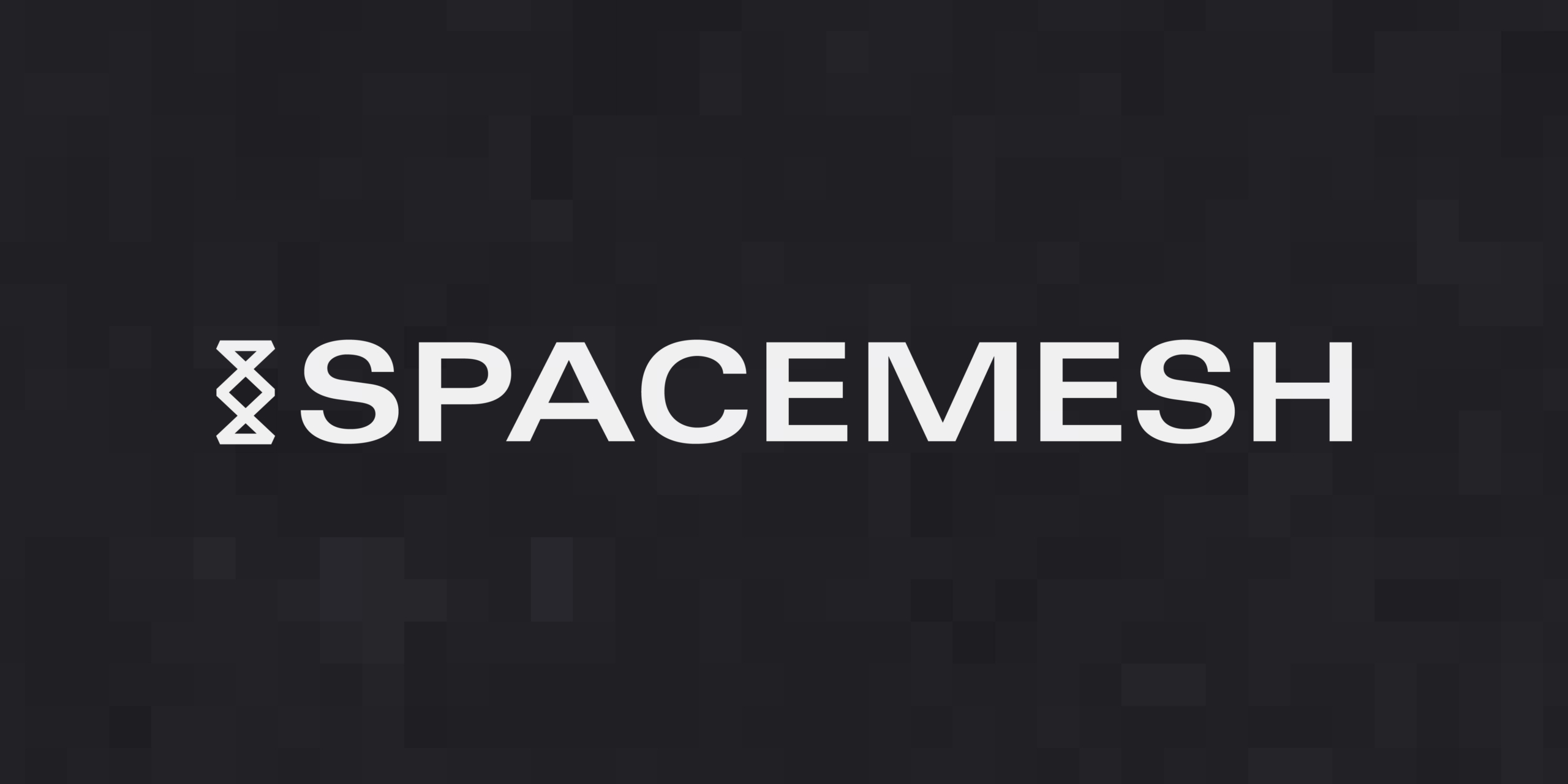Introduction
Spacemesh is a pioneering Layer 1 blockchain protocol introducing the Proof of Space Time (PoST) mechanism within SpacemeshOS. It aims to restructure the framework of decentralized, energy-efficient, and scalable smart contract platforms. By deviating from the conventional Proof of Work (PoW) mechanisms, Spacemesh adopts a mesh topology, facilitating parallel block generation and validation through a layered directed acyclic graph (DAG).
Innovation
The core innovation of Spacemesh is its consensus mechanism, the Proof of Space-Time, which replaces the traditional PoW, promising an energy-efficient and scalable solution for decentralized networks. This technology enables a mesh topology that supports simultaneous block generation and validation, offering a significant leap toward achieving high transaction throughput without compromising decentralization.
Architecture
Spacemesh’s architecture is notable for separating core consensus mechanisms and VM execution, which is aimed at enhancing scalability. It introduces a built-in roll-up for transactions, reducing costs for simple transfers. Executors receive incentives for performing VM tasks integrated into the Layer 1 ledger to ensure system reliability and efficiency. This separation, along with the mesh topology, is a strategic move to handle thousands of transactions per second while maintaining the network’s decentralized character.
Code Quality
The Spacemesh protocol is built on the solid foundation of the Meshcash framework, with significant modifications to leverage Space-Time as a resource. The design ensures that honestly generated blocks are always validated, preventing powerful miners from gaining a disproportionate share of rewards. The commitment to a race-free protocol and the meticulous design reflects the high code quality and the development team’s expertise.
Product Roadmap
The Spacemesh Open Testnet is a long-standing beta test, evidencing the team’s commitment to thorough testing and iterative improvement. With a focus on addressing fundamental issues such as fair global cryptocurrency distribution, infrastructure for international payments, and creating a scalable smart contract platform, Spacemesh is poised for impactful advancements in the blockchain space.
Spacemesh Usability
Spacemesh is designed with usability at its core, aiming to offer a user-friendly experience for miners (smeshers) and end-users. Integrating PoST and the innovative VM design ensures that users can engage with the platform efficiently, facilitating a global means of payment and the creation of decentralized applications without extensive costs or technical barriers.
Team
The development team behind Spacemesh comprises experienced professionals with diverse expertise in blockchain technology, cryptography, and decentralized systems. This vast and skilled team is instrumental in driving the project towards its vision of a fair, decentralized, scalable blockchain platform.
Conclusion
Spacemesh stands out as a significant innovator in the blockchain landscape with its Proof of Space-Time mechanism, mesh topology, and forward-thinking architecture that prioritizes scalability, energy efficiency, and decentralization. While the project is ambitious, its strong foundation, comprehensive testing through the Open Testnet, and a clear roadmap indicate its potential to reshape the future of decentralized smart contract platforms. As Spacemesh continues to evolve, its commitment to solving critical issues in cryptocurrency distribution, payment infrastructures, and smart contract scalability will undoubtedly contribute to its success and adoption.
| Initial Screening | |||
| Keep researching | |||
| Does this project need to use blockchain technology? | Yes | ||
| Can this project be realized? | Yes | ||
| Is there a viable use case for this project? | Yes | ||
| Is the project protected from commonly known attacks? | Yes | ||
| Are there no careless errors in the whitepaper? | Yes | ||
| Project Technology Score | |||
| Description | Scorecard | ||
| Innovation (Out Of 11) | 10 | ||
| How have similar projects performed? | Good | 2 | |
| Are there too many innovations? | Medium | 1 | |
| Percentage of crypto users that will use the project? | Over 11% | 5 | |
| Is the project unique? | Yes | 2 | |
| Architecture (Out of 12) | 9 | ||
| Overall feeling after reading whitepaper? | Good | 2 | |
| Resistance to possible attacks? | Good | 2 | |
| Complexity of the architecture? | Not too complex | 2 | |
| Time taken to understand the architecture? | 20 – 50 min | 1 | |
| Overall feeling about the architecture after deeper research? | Medium | 2 | |
| Has the project been hacked ? | No | 0 | |
| Code Quality (out of 15) | 15 | ||
| Is the project open source? | Yes | 2 | |
| Does the project use good code like C,C++, Rust, Erlang, Ruby, etc? | Yes | 2 | |
| Could the project use better programming languages? | No | 0 | |
| Github number of lines? | More than 10K | 1 | |
| Github commits per month? | More than 10 | 2 | |
| What is the quality of the code? | Good | 2 | |
| How well is the code commented? | Outstanding | 2 | |
| Overall quality of the test coverage? | Outstanding | 2 | |
| Overall quality of the maintainability index? | Outstanding | 2 | |
| When Mainnet (out of 5) | 5 | ||
| When does the mainnet come out? | Mainnet Ready | 5 | |
| Usability for Infrastructure Projects (out of 5) | 3 | ||
| Is it easy to use for the end customer? | Medium | 3 | |
| Team (out of 7) | 7 | ||
| Number of active developers? | 5+ | 2 | |
| Developers average Git Background? | Senior | 2 | |
| Developers coding style? | Outstanding | 3 | |
| Total Score (out of 55) | 49 | ||
| Percentage Score | |||
| Innovation | 18.18% | ||
| Architecture | 16.36% | ||
| Code Quality | 27.27% | ||
| Mainnet | 9.09% | ||
| Usability | 5.45% | ||
| Team | 12.73% | ||
| Total | 89.08% |





